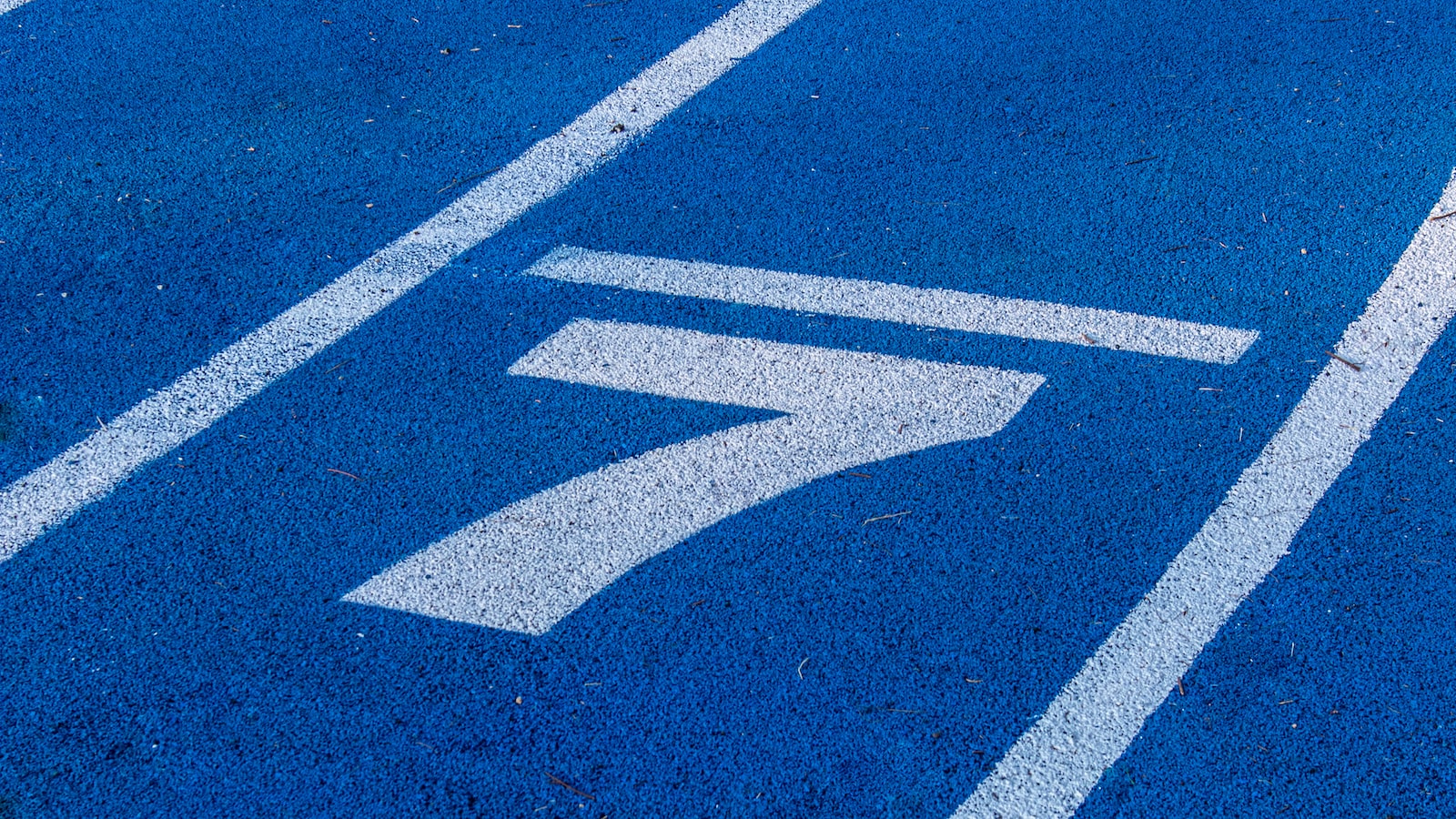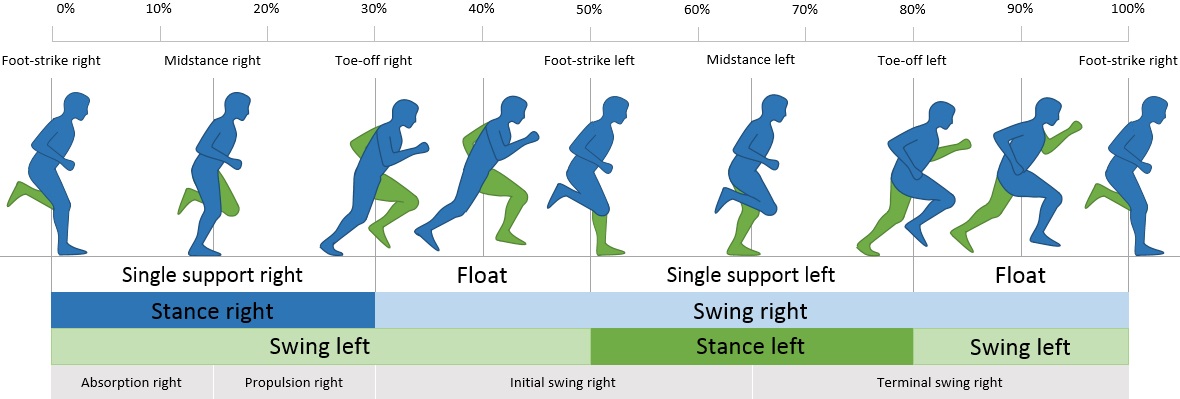In a world full of bustling schedules and never-ending to-do lists, it often feels like time itself is running away from us. But what if we could harness the power of time, and use it to our advantage on the tracks? Welcome to the realm of the perfect stride, where runners transform into harmonious beings in motion, effortlessly gliding through each kilometer with grace and precision. Today, we venture into the cosmic realm of mastering the ideal running pace per kilometer, uncovering the secrets that will propel you into a state of running nirvana. So fasten your shoelaces, dear readers, as we embark on a journey that will leave you breathless – in the most exhilarating way possible.
Unleashing Your Inner Speed: Understanding the Importance of Finding Your Perfect Stride
The perfect stride is the key to unlocking your inner speed and maximizing your running performance. It’s not just about running faster, but running smarter. When you find your perfect stride, you’ll experience improved efficiency, reduced risk of injuries, and ultimately, reach your personal best. Here’s why understanding and finding your perfect stride is crucial:
- Efficiency: Your stride length and cadence directly impact your running efficiency. By analyzing your natural running form and finding the optimal combination of these factors, you can minimize energy wastage and streamline your motion, allowing you to cover more ground with less effort.
- Injury Prevention: Your stride can either protect or put stress on your muscles, joints, and connective tissues. By identifying any imbalances, such as overstriding or excessive vertical movement, you can reduce the risk of common running injuries like shin splints or runner’s knee. A properly aligned stride will help distribute impact forces evenly, keeping you injury-free.
- Performance Improvement: Your perfect stride is based on your unique body mechanics and may differ from others. Embracing and fine-tuning your own running style will enable you to become more attuned to your body’s natural rhythm, leading to faster speeds, improved endurance, and enhanced overall performance.
Remember, finding your perfect stride is a process of self-discovery and experimentation. It requires patience, dedication, and a willingness to make adjustments along the way. Don’t be afraid to seek guidance from running coaches or use technology like gait analysis to help you in your quest. Once you unleash your inner speed by understanding and aligning with your perfect stride, the possibilities for your running prowess are boundless!
The Science behind the Magic: Exploring the Relationship between Running Pace and Performance

The Science Unveiled: The Intricate Connection between Running Pace and Performance
Embarking on a journey of exploration into the captivating realm of running pace and its undeniable impact on performance, we unravel the hidden secrets behind this harmonious relationship. The interplay between running speed and overall achievement is a phenomenon that entices both athletes and researchers alike. Here, we delve into the scientific intricacies that underpin this magical connection, shedding light on the remarkable insights gained from countless studies and athletic experiences.
One crucial aspect lies in the physiological adaptations prompted by faster running paces. As speed increases, so does the body’s demand for oxygen, compelling the heart and lungs to work in perfect synchronization. Enhanced cardiovascular fitness gradually emerges as a reward for diligently pushing one’s pace, enabling the body to efficiently deliver oxygen to the muscles. Moreover, the increased demand for oxygen triggers the expansion of capillaries throughout the musculoskeletal system, enhancing blood flow and nutrient delivery. Accompanied by these physiological rearrangements, muscular efficiency skyrockets, promoting optimal movement mechanics and reducing energy wastage.
- Efficiency: Running at a faster pace fosters the development of efficient running mechanics, reducing unnecessary energy expenditure and minimizing fatigue.
- Cardiovascular Endurance: The heart and lungs adapt to the increased demands of faster running speeds, advancing overall cardiovascular fitness.
- Muscle Fiber Activation: Faster paces activate a higher proportion of fast-twitch muscle fibers, which possess greater strength and endurance capacities.
- Metabolic Adaptation: As the body adapts to the heightened energy demands, it becomes more efficient at metabolizing fuel sources to generate adequate energy.
Unlocking the secrets to optimizing running pace and performance has far-reaching implications, enabling athletes to surpass their limits and brave new frontiers. By understanding the scientific principles at play, runners can craft personalized training plans, integrating tailored workouts aimed at improving both speed and efficiency. Unleash the true potential within – where science and magic entwine – and embrace the exhilarating journey towards reaching new horizons in athletic accomplishment.
Determining Your Optimal Stride Length: Strategies to Measure and Improve Your Speed
Improving your speed starts with understanding and optimizing your stride length. By finding your optimal stride length, you can maximize your efficiency and propel yourself to faster running times. Here are some strategies to help you measure and improve your stride length:
1. Video analysis: Record yourself running at your maximum speed and analyze the footage. Focus on the distance covered with each stride, ensuring it’s neither too long nor too short. Look for any asymmetry or inefficient movements that may be affecting your stride length.
2. Experiment with different stride lengths: During your training sessions, try varying your stride length while maintaining the same speed. Start by taking shorter strides and gradually increase the length. Pay attention to how each adjustment affects your comfort level and overall speed. Find the stride length that feels most natural and efficient for you.
Pace Per Kilometer: Unraveling the Ideal Rate for Endurance and Efficiency
When it comes to long-distance running, finding the perfect pace per kilometer is a puzzle every athlete aims to solve. How fast should you push yourself to achieve optimal endurance and efficiency? Let’s dive into the intricacies of pacing and unlock the secrets that lie within.
Endurance and efficiency are the twin pillars of successful distance running. To strike a balance between these two essential elements, consider the following factors:
- Breathing Rhythm: Sync your breathing pattern with your strides, inhaling deeply and exhaling fully. This allows for a consistent flow of oxygen, preventing unnecessary muscle fatigue.
- Heart Rate: Maintain a heart rate in the aerobic zone, where your body can effectively utilize oxygen to fuel your muscles. This sustainable intensity level allows you to push beyond comfort without exhausting yourself too soon.
- Step Length: Find the sweet spot between overstriding and understriding. Longer strides can lead to early fatigue, while shorter strides may sacrifice speed. Experiment with your stride length to discover what works best for your body.
As you embark on your journey towards uncovering your ideal pace per kilometer, remember that it may vary depending on factors such as terrain, weather conditions, and your individual fitness level. The key is to listen to your body, find your rhythm, and adapt accordingly. So lace up your shoes, hit the road, and let the pursuit of enduring and efficient running be your ultimate quest!
Fine-Tuning Your Running Mechanics: Techniques to Enhance Your Stride and Maximize Performance
When it comes to running, the efficiency of your stride can greatly impact your performance. To maximize your potential and improve your running mechanics, it’s essential to focus on specific techniques that can transform your stride into a well-oiled machine. By fine-tuning both your form and technique, you can achieve a more powerful and fluid stride that propels you towards your running goals.
To enhance your stride and take your running abilities to the next level, consider incorporating the following techniques:
- Engage your core: Maintaining a strong core while running not only provides stability but also helps optimize your stride. By engaging your abdominal muscles, you can encourage a more upright posture, preventing excess strain on your back and promoting a smoother stride.
- Land softly: Striking the ground with excessive force can be detrimental to both your joints and speed. Aim to land softly by focusing on a midfoot strike, allowing your foot and heel to make contact simultaneously. This technique absorbs impact and minimizes the risk of injury while facilitating a more efficient stride.
- Increase stride turnover: An important aspect of running mechanics involves the speed at which you turnover your strides. To enhance performance, strive to increase your stride turnover by taking shorter, quicker steps. This technique allows for greater maneuverability and helps reduce the risk of overstriding, which can decrease your overall efficiency.
- Optimize arm swing: Your arms play a significant role in maintaining balance and propelling your body forward. Ensure your arms swing naturally at a ninety-degree angle, loosely moving in sync with your legs. Avoid unnecessary tension and excessive swinging, as it may detract from your overall running stride.
By implementing these techniques, you can fine-tune your running mechanics and unlock your full potential as a runner. Remember, practice makes perfect, so be patient and consistent in incorporating these adjustments into your training routine. With dedication and focus, you’ll notice significant improvements in both your stride and performance, ultimately allowing you to conquer new running horizons.
Achieving Pace Perfection: Training Tips and Strategies to Master the Ideal Running Tempo
When it comes to running, finding your perfect pace is essential for reaching your full potential. Here are some training tips and strategies to help you master the ideal running tempo:
1. Proper Warm-up
Before hitting the pavement, warm up your muscles to prepare them for the intensity ahead. Dynamic stretches like high knees, butt kicks, and leg swings are great for loosening up and increasing blood flow.
2. Incorporate Interval Training
Interval training is an effective way to improve your running tempo. Alternate between periods of high-intensity sprints and active recovery jogs. This will not only boost your speed but also enhance your endurance levels.
3. Mindful Breathing
Pay attention to your breathing during your runs. Adopting a rhythmic breathing pattern, such as inhaling for three steps and exhaling for two, can help regulate your oxygen intake and ultimately optimize your pace.
4. Track Your Progress
Keep a log of your training sessions, noting down the distances covered and the time it takes to complete them. Monitoring your progress will allow you to identify areas for improvement and adjust your tempo accordingly.
5. Listen to Your Body
While it’s important to push yourself, it’s equally crucial to listen to your body’s signals. Don’t ignore any warning signs of fatigue or injury. Allow yourself ample rest and recovery days to avoid burnout and maintain a consistent pace.
To Conclude
And with that, we reach the end of our journey through the secrets of the perfect stride and the mastery of the ideal running pace per kilometer. As we’ve explored the depths of this intricate art, we have uncovered the hidden nuances that separate a good run from an extraordinary one.
Like a composer harmonizing a symphony, a runner must strive to find the delicate balance between speed and endurance, pushing the boundaries of their capabilities while honoring the rhythm of their body. It is a delicate dance, an ever-changing partnership between human will and corporeal potential.
Through the pages of this article, we have shed light on the importance of understanding our bodies, their limitations, and their capacity for growth. We have immersed ourselves in the science behind the perfect stride, dissecting every fraction of a second that separates the truly exceptional from the rest.
But let us not forget the intangibles, the magic that awakens within us when we lace up our shoes and take that first step onto the track or the road. It is the pure joy of running, the freedom that comes from feeling the wind caress our faces, and the rhythm of our beating hearts pushing us forward.
Whether you are a beginner seeking the foundation of an efficient stride or an experienced runner on a quest for new personal bests, may the knowledge you have gained here ignite the fire within you. For it is through this fire, fueled by the passion for the road, that we conquer personal records and surpass our own limits.
Remember, dear reader, that there is no singular “ideal” pace that fits all as we stride through this diverse tapestry of life. Embrace the unique cadence that your body calls its own, and let it propel you to new heights with each kilometer conquered.
And so, as we bid adieu, we leave you with a challenge – go forth, embrace the road, and discover the perfect stride that resides within you. For it is in the harmony of your mind, body, and soul that the truest joy of running lies. So, lace up your shoes, runners of the world, and may every stride be a testament to your relentless pursuit of the perfect pace.


